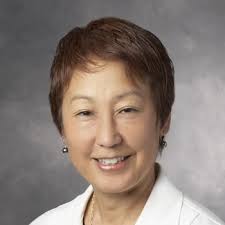Legend has it that Thomas Edison “failed” 1,000 times before he managed to create the incandescent lightbulb. Edison says he didn’t get discouraged, instead he looked at each unsuccessful experiment as being one step closer to finding the method that really worked. That’s a lesson in optimism and persistence for all of us.
Lineage Cell Therapeutics has that same spirit. Lineage is trying to develop a stem cell therapy to help people with spinal cord injuries. CIRM invested $14.3 million in the first version of this approach which produced encouraging results. But encouraging is not enough. So, Lineage set about doing a complete overhaul of the therapy known as OPC1.
The idea behind it is to turn embryonic stem cells into oligodendrocyte progenitor cells (OPCs). These OPCs are precursors to cells that play an important role in supporting and protecting nerve cells in the central nervous system, the area damaged in a spinal cord injury. By transplanting these cells at the injury site it’s hoped they will help restore some of the broken connections, allowing patients to regain some movement and feeling.
In the original trial many patients, who had been paralyzed from the chest down, regained some use of their arms, hands and even fingers. This was better than any previous therapy had managed. But for Lineage it wasn’t good enough. So, they set about redesigning their whole manufacturing process, making improvements at every step along the way.
In a news release they outlined those improvements:
- A new ready-to-inject formulation of OPC1, which enables clinical use at a much larger number of spinal cord treatment centers, accelerating enrollment for a larger and potentially registrational clinical trial.
- Elimination of dose preparation, reducing overall preparation time from 24 hours to 30 minutes and cutting logistics costs by approximately 90%.
- A 10 to 20-fold increase in OPC1 production scale, sufficient to support late-stage clinical development and which can be further scaled to meet initial commercial use.
- A 50-75% reduction in product impurities.
- Improvements in OPC1 functional activity, as assessed by cellular migration and secretion of key growth factors.
They also came up with new quality control tests to make sure everything was working well and eliminated all animal-based production reagents.
Brian Culley, Lineage CEO was, understandably, enthusiastic about the changes and its prospects for helping people with spinal cord injuries:
“Manufacturing is the foundation of cell therapy and the significant enhancements we have achieved with OPC1 marks the second time we have successfully transformed a research-grade production process into one capable of supporting a successful commercial product. Our objective is to be the premier allogeneic cell therapy company and our dedication to manufacturing excellence allows us not only to reduce or eliminate certain regulatory and commercial hurdles, but also establish strong competitive barriers in our field.”
Lineage are now hoping to go back to the Food and Drug Administration (FDA) in the near future and get permission to run another clinical trial.
Here are stories of the impact the first generation of this approach have already had on people.











 “Physicians often choose not to give chemotherapy or radiation to young children with SCID because there are lifelong effects: neurological impairment, growth delays, infertility, risk of cancer, etc.,” says Judith Shizuru, MD, PhD, professor of medicine at Stanford University.
“Physicians often choose not to give chemotherapy or radiation to young children with SCID because there are lifelong effects: neurological impairment, growth delays, infertility, risk of cancer, etc.,” says Judith Shizuru, MD, PhD, professor of medicine at Stanford University. Regular readers of our blog will already know about our funding for the clinical trial being run by
Regular readers of our blog will already know about our funding for the clinical trial being run by  Well, rest easy, because scientists at the Diabetes Research Institute at the University of Miami finally found them.
Well, rest easy, because scientists at the Diabetes Research Institute at the University of Miami finally found them.


